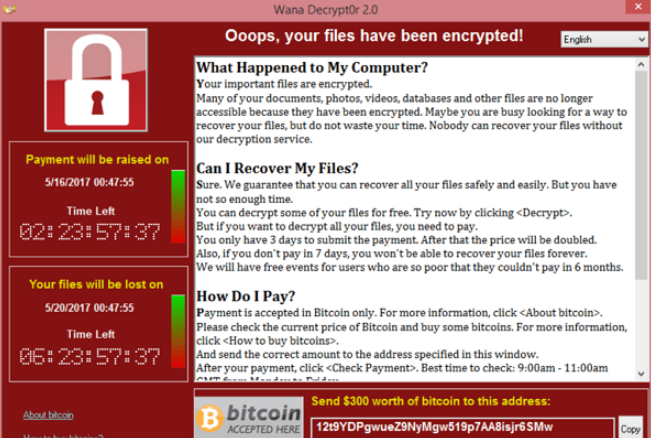.NEVADA Ransomware Virus
.NEVADA Ransomware Virus refers to a serious malware infection that encrypts files. This ransomware is currently targeting Windows and Linux users, as is operated as a ransomware-as-a-service (RaaS). It can be identified by the .NEVADA extension added to encrypted files. Unfortunately, if it manages to encrypt files, they will not be openable unless they’re first put through a decryptor. The problem with that is that only the cybercriminals operating this ransomware have a decryptor. If you have a backup of your files, you can start file recovery as soon as you remove .NEVADA Ransomware Virus from your computer. If you don’t have a backup, there’s not much you can do.
.NEVADA Ransomware Virus will target all important files, including photos, images, videos, documents, and so forth. All encrypted files will have the .NEVADA extension. The extension will allow you to immediately recognize which files have been affected. For example, image.jpg would become image.jpg.NEVADA. Obtaining a decryptor to decrypt files with that extension is not going to be easy, and the process unfortunately involves paying a ransom.
Once files have been encrypted, the ransomware will drop a readme.txt ransom note. The note threatens victims and explains how they can obtain the decryptor. The price for the decryptor is not mentioned but considering the ransomware may be targeting businesses, it would be at least a couple of thousand dollars. Victims are asked to download the Tor browser and access the provided link to get more instructions. The thing about paying the ransom is that there are no guarantees that a decryptor would be sent after paying. Victims should always keep in mind that they are dealing with cyber criminals, and just because they say they will send the decryptor does not mean they actually will. Countless users have paid ransoms only to receive nothing in return because cybercriminals can just take the money.
For users with backups, file recovery won’t be a problem. However, before connecting to the backup, users need to fully remove .NEVADA Ransomware Virus from their computers. Otherwise, backed-up files would also become encrypted. For .NEVADA Ransomware Virus removal, users should use a professional anti-malware program because they risk causing additional damage if they try to do it manually. When ransomware has been fully removed, file recovery can begin.
If there is no backup, restoring files will be more difficult. The only option is to wait for a free .NEVADA Ransomware Virus decryptor to be released. It’s unlikely that you will find one right now, but it’s possible that it will eventually become available. However, .NEVADA Ransomware Virus is a sophisticated infection, and it is difficult for malware experts to develop a free decryptor. Nonetheless, for users who are out of options, backing up encrypted files and waiting for a free decryptor to be released may be the only choice they have.
How does ransomware spread
When ransomware targets regular users, it’s usually spread via torrents, malicious email attachments, ads/links on high-risk websites, etc. Users with bad internet habits are much more likely to have malware infections since they are more willing to take risks when using the internet. If users made an effort to develop safer browsing habits, their chances of acquiring malware would be significantly decreased.
Malicious actors can easily post torrents containing malware on torrent websites because they are generally poorly regulated. The torrents can stay up for a long time before being taken down, infecting thousands of users. Torrents for popular movies, TV shows, video games, software, etc. frequently contain malware. It’s also essentially content theft to download copyrighted content for free via torrents.
Another popular way to spread malware is through email attachments. This applies to ransomware that targets both regular users and businesses. When users open malicious email attachments, malware is downloaded onto their systems. Generic ransomware-spreading emails are quite easy to identify because they are full of grammar/spelling mistakes. The mistakes are particularly evident when senders claim to be from legitimate companies. You will rarely see mistakes in legitimate emails because they look unprofessional.
Additionally, malicious senders often refer to the recipients as “Users,” “Members,” “Customers,” etc. If the sender was a company whose services the recipients use, legitimate emails would address recipients by name.
Ransomware that targets businesses tends to be far more sophisticated. But regular users may also encounter better-made malware campaigns. This is why users should always scan unsolicited email attachments with anti-virus software or VirusTotal before opening them.
How to remove .NEVADA Ransomware Virus
It is advised that you use a good anti-malware program to delete .NEVADA Ransomware Virus from your computer because it is a sophisticated malware infection. Your computer could be even more at risk if you try to do it manually. Additionally, it’s possible that you’ll miss some ransomware components, which will then allow the ransomware to recover. If the ransomware was able to recover while you were connected to your backup, those backed-up files would become encrypted as well. The quickest and safest way to delete .NEVADA Ransomware Virus is to use anti-malware software. After the ransomware has been completely removed from your computer, you can safely connect to your backup and begin restoring files.
The only choice you have if you don’t have a backup is to wait for a free .NEVADA Ransomware Virus decryptor to be released. However, the exact date of its release is uncertain. Nonetheless, those without backups should back up their encrypted files and regularly look for a decryptor. If and when it becomes available, it will be posted on NoMoreRansom.
Offers
Download Removal Toolto scan for .NEVADA Ransomware VirusUse our recommended removal tool to scan for .NEVADA Ransomware Virus. Trial version of provides detection of computer threats like .NEVADA Ransomware Virus and assists in its removal for FREE. You can delete detected registry entries, files and processes yourself or purchase a full version.
More information about SpyWarrior and Uninstall Instructions. Please review SpyWarrior EULA and Privacy Policy. SpyWarrior scanner is free. If it detects a malware, purchase its full version to remove it.

WiperSoft Review Details WiperSoft (www.wipersoft.com) is a security tool that provides real-time security from potential threats. Nowadays, many users tend to download free software from the Intern ...
Download|more


Is MacKeeper a virus? MacKeeper is not a virus, nor is it a scam. While there are various opinions about the program on the Internet, a lot of the people who so notoriously hate the program have neve ...
Download|more


While the creators of MalwareBytes anti-malware have not been in this business for long time, they make up for it with their enthusiastic approach. Statistic from such websites like CNET shows that th ...
Download|more
Quick Menu
Step 1. Delete .NEVADA Ransomware Virus using Safe Mode with Networking.
Remove .NEVADA Ransomware Virus from Windows 7/Windows Vista/Windows XP
- Click on Start and select Shutdown.
- Choose Restart and click OK.

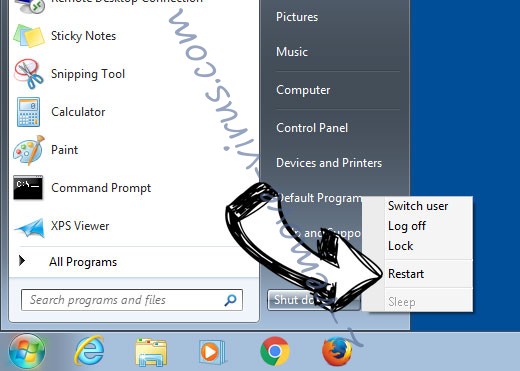
- Start tapping F8 when your PC starts loading.
- Under Advanced Boot Options, choose Safe Mode with Networking.

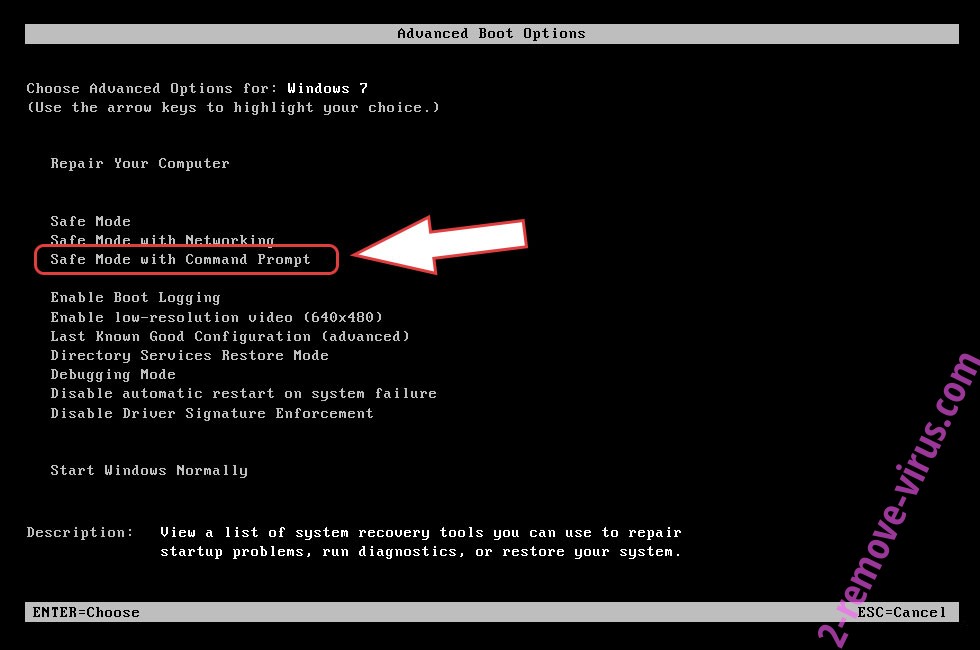
- Open your browser and download the anti-malware utility.
- Use the utility to remove .NEVADA Ransomware Virus
Remove .NEVADA Ransomware Virus from Windows 8/Windows 10
- On the Windows login screen, press the Power button.
- Tap and hold Shift and select Restart.

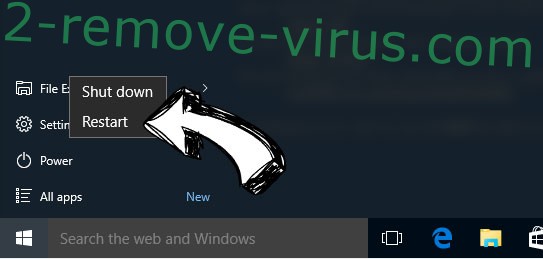
- Go to Troubleshoot → Advanced options → Start Settings.
- Choose Enable Safe Mode or Safe Mode with Networking under Startup Settings.

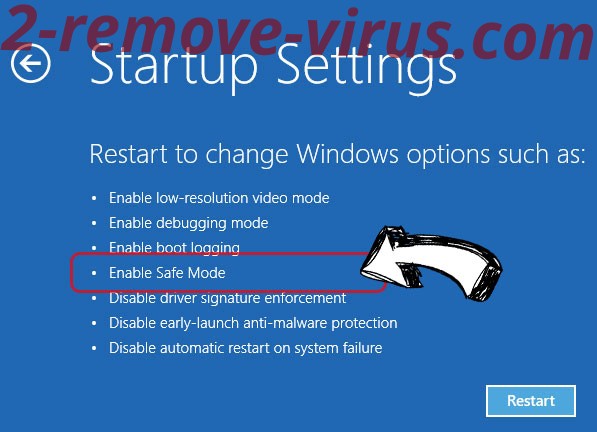
- Click Restart.
- Open your web browser and download the malware remover.
- Use the software to delete .NEVADA Ransomware Virus
Step 2. Restore Your Files using System Restore
Delete .NEVADA Ransomware Virus from Windows 7/Windows Vista/Windows XP
- Click Start and choose Shutdown.
- Select Restart and OK


- When your PC starts loading, press F8 repeatedly to open Advanced Boot Options
- Choose Command Prompt from the list.

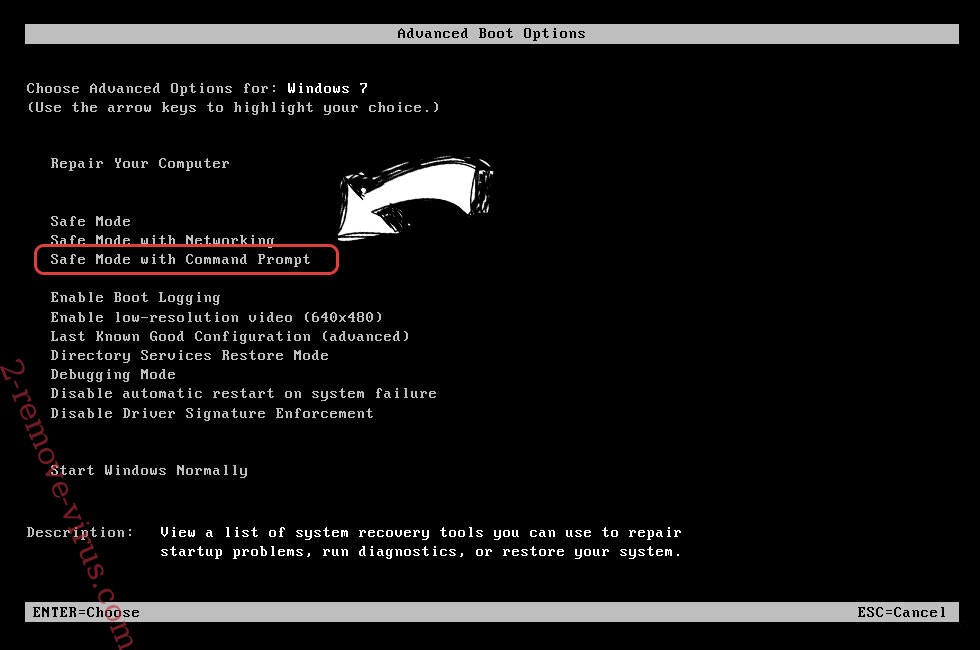
- Type in cd restore and tap Enter.

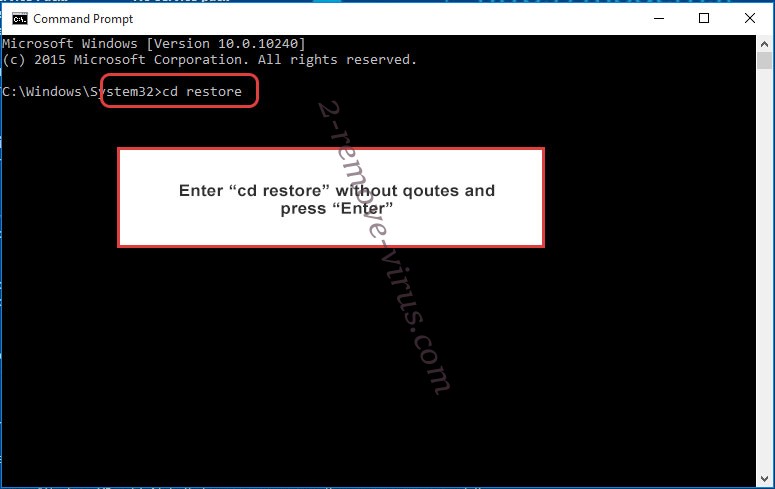
- Type in rstrui.exe and press Enter.

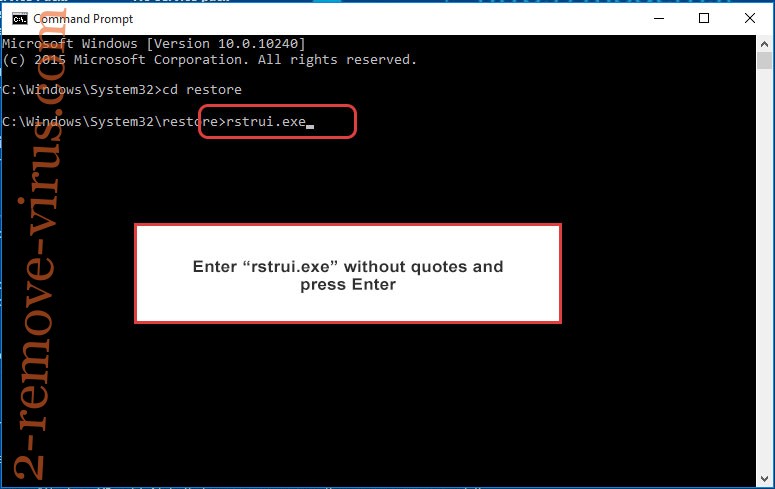
- Click Next in the new window and select the restore point prior to the infection.

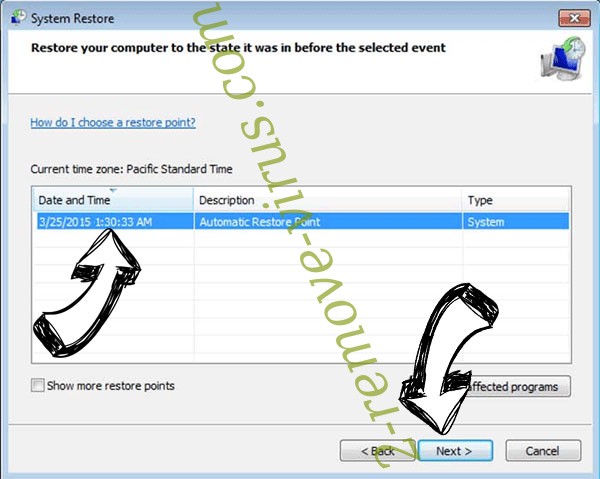
- Click Next again and click Yes to begin the system restore.

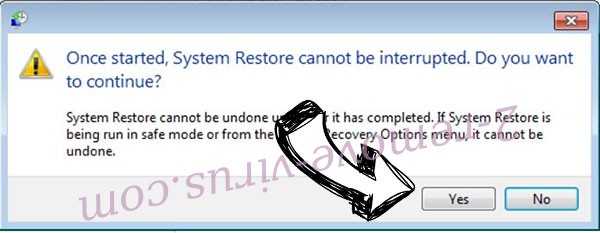
Delete .NEVADA Ransomware Virus from Windows 8/Windows 10
- Click the Power button on the Windows login screen.
- Press and hold Shift and click Restart.


- Choose Troubleshoot and go to Advanced options.
- Select Command Prompt and click Restart.

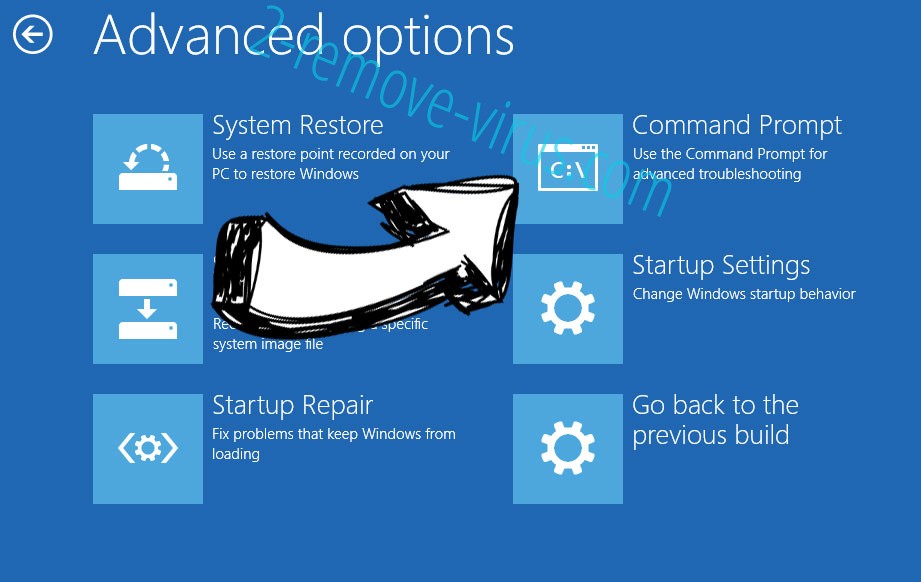
- In Command Prompt, input cd restore and tap Enter.


- Type in rstrui.exe and tap Enter again.


- Click Next in the new System Restore window.

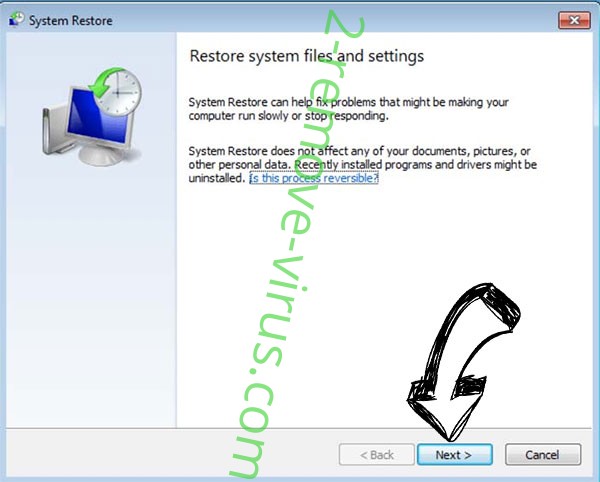
- Choose the restore point prior to the infection.


- Click Next and then click Yes to restore your system.


Site Disclaimer
2-remove-virus.com is not sponsored, owned, affiliated, or linked to malware developers or distributors that are referenced in this article. The article does not promote or endorse any type of malware. We aim at providing useful information that will help computer users to detect and eliminate the unwanted malicious programs from their computers. This can be done manually by following the instructions presented in the article or automatically by implementing the suggested anti-malware tools.
The article is only meant to be used for educational purposes. If you follow the instructions given in the article, you agree to be contracted by the disclaimer. We do not guarantee that the artcile will present you with a solution that removes the malign threats completely. Malware changes constantly, which is why, in some cases, it may be difficult to clean the computer fully by using only the manual removal instructions.
